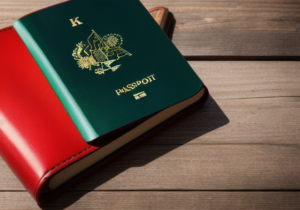The Hague Apostille process is an essential procedure for anyone wishing to authenticate documents intended for international use. This article will clarify the complexities of how the Hague Apostille process is carried out, providing a comprehensive guide to the steps involved.
What is the Hague Apostille?
The Hague Apostille is a certification process established under the Hague Convention 1961. This convention, formally known as the “Hague Convention Abolishing the Requirement of Legalization for Foreign Public Documents,” aims to simplify the authentication of documents used across international borders. The Apostille confirms the legitimacy of the document and the authority of the issuer, making it universally acceptable among member countries.
Key Objectives of the Hague Apostille
- Simplification: The Apostille eliminates the need for further legalization by foreign consulates or embassies.
- Efficiency: Speeds up the document verification process, ensuring reduced time and administrative burden
- Standardization: It provides a uniform procedure for certifying documents, ensuring consistency and reliability.
Steps in the Hague Apostille Process
- Determine the Need for Apostille
Before initiating the Apostille process, confirm whether the document requires Apostille certification. Generally, documents such as birth certificates, marriage certificates, academic diplomas, and notarized documents intended for use abroad need an Apostille. Check the specific requirements of the country where the document will be used.
- Prepare the Document
Ensure that the document is complete, accurate, and properly signed. For notarized documents, verify that the notary’s signature and seal are intact. Incomplete or incorrect documents may be rejected during the Apostille process.
- Notarization (if applicable)
If the document requires notarization, have it notarized by a licensed notary public. Notarization confirms the authenticity of the signatures and seals on the document. Ensure that the notary’s details are clear and legible.
- Submit the Document to the Competent Authority
Identify and submit your document to the relevant competent authority in your country for Apostille certification. In most countries, this authority is the Ministry of Foreign Affairs or a designated department within the government.
Documents Required for Submission
- Original document or a certified copy
- Notarized document (if applicable)
- Identification proof (e.g., passport, driver’s license)
- Payment for any applicable fees
- Obtain the Apostille Certificate
Once the document is submitted, the competent authority will review and verify it. Upon successful verification, the Apostille certificate is attached to the document. This certificate includes the following details:
- Country of issuance
- Name of the person who signed the document
- Capacity in which the person signed
- The seal or stamp of the competent authority
- Date of issuance
- Signature of the person authorized to issue the Apostille
- Use the Apostilled Document Abroad
With the Apostille attached, the document becomes valid and accepted in any country, as long as it is a member of the Hague Convention. Present the document as necessary for legal and administrative personal purposes.
Common Questions About the Hague Apostille Process
What Documents Can Be Apostilled?
Documents that can be Apostilled include:
- Birth, marriage, and death certificates
- Academic diplomas and transcripts
- Notarized documents
- Powers of attorney
- Court decisions and administrative documents
How Long Does the Apostille Process Take?
The processing time for an Apostille can vary depending on the country and the volume of applications. Generally, it can take anywhere from a few days to several weeks. It is advisable to check with the local competent authority for specific processing times.
Is the Apostille Process Expensive?
The cost of obtaining an Apostille varies depending on the country, and documents. Fees typically range from a nominal amount to a few hundred dollars. Additional fees may apply for expedited services or extra copies.
Can the Apostille Process be Done Online?
In some countries, it is possible to request an Apostille online or through mail. However, in many cases, a physical submission of documents is required. Verify the procedure with the relevant authority in your country.
What if the Document is Not in the Local Language?
If the document is not in the local language, it may need to be translated before the Apostille process. Ensure that the translation is done by a certified translator and attach both the original and translated versions when submitting for Apostille.
Conclusion
The Hague Apostille process is fundamental in facilitating the use of documents across international borders by standardizing the verification procedure. Understanding the steps involved, from preparation to submission, ensures that your documents are correctly certified and accepted globally. Whether for personal, legal, or administrative purposes, the Apostille simplifies international documentation, fostering smoother interactions between countries.
By going through the steps outlined and answering common questions, you can effectively navigate the Hague Apostille process and ensure your documents meet international standards.



